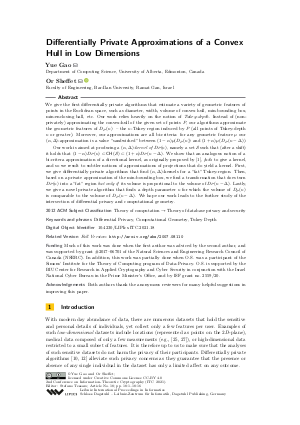@InProceedings{gao_et_al:LIPIcs.ITC.2021.18,
author = {Gao, Yue and Sheffet, Or},
title = {{Differentially Private Approximations of a Convex Hull in Low Dimensions}},
booktitle = {2nd Conference on Information-Theoretic Cryptography (ITC 2021)},
pages = {18:1--18:16},
series = {Leibniz International Proceedings in Informatics (LIPIcs)},
ISBN = {978-3-95977-197-9},
ISSN = {1868-8969},
year = {2021},
volume = {199},
editor = {Tessaro, Stefano},
publisher = {Schloss Dagstuhl -- Leibniz-Zentrum f{\"u}r Informatik},
address = {Dagstuhl, Germany},
URL = {https://drops.dagstuhl.de/entities/document/10.4230/LIPIcs.ITC.2021.18},
URN = {urn:nbn:de:0030-drops-143377},
doi = {10.4230/LIPIcs.ITC.2021.18},
annote = {Keywords: Differential Privacy, Computational Geometry, Tukey Depth}
}

 Creative Commons Attribution 4.0 International license
Creative Commons Attribution 4.0 International license


























